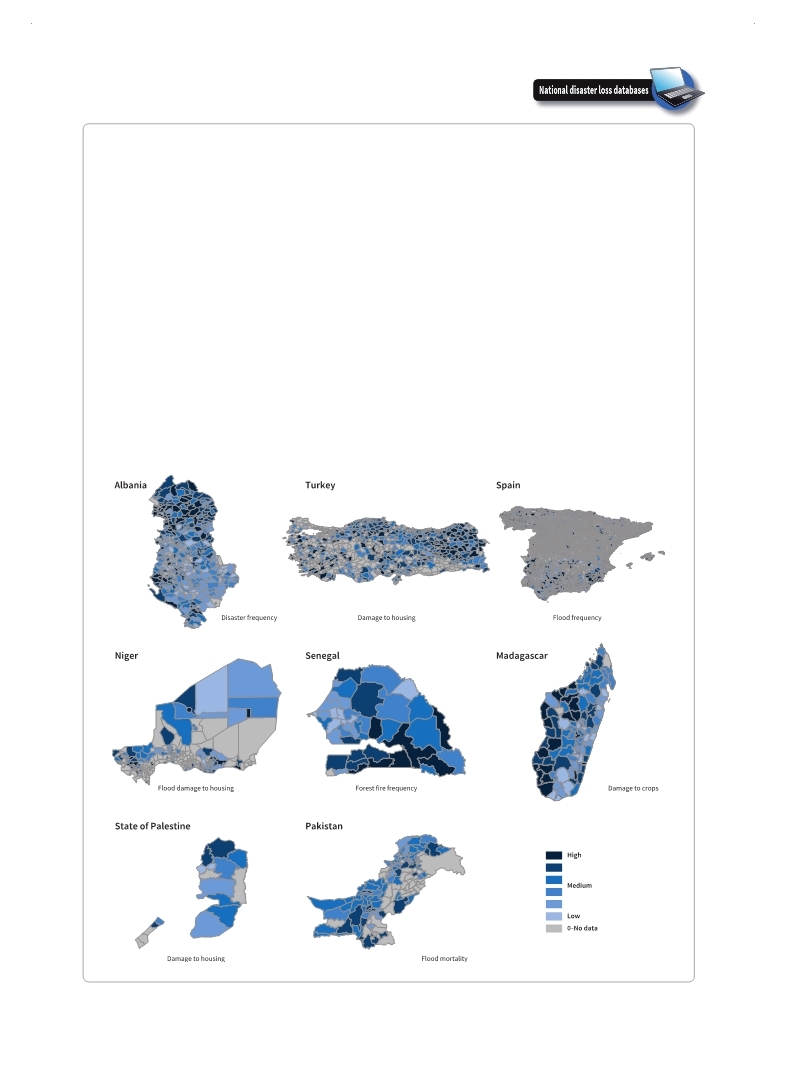 |
Global Assessment Report on Disaster Risk Reduction 2015
Making development sustainable: The future of disaster risk management |
 |
Global Assessment Report on Disaster Risk Reduction 2015
Making development sustainable: The future of disaster risk management |
|
|

92
Part I - Chapter 4
Box 4.2 Understanding loss and risk from the bottom up: national loss accounting
Figure 4.2 Increase in number of national loss databases featured in Global Assessment Reports
To uncover extensive risks, an increasing number of countries around the world are adopting a simple and well-defined methodology to report, analyse and display disaster occurrence and losses at the local level through a standard definition of hazards, impacts and other indicators.3 Because the loss data is captured at the level of local administrative units, this makes it possible to record losses associated with huge numbers of small extensive disasters that are not internationally reported and thus do not appear in other disaster databases.
In a pattern that resembles the growth of computer processing power, the number of countries systematically collecting disaster loss data has roughly doubled every two years since these efforts began in Latin America in the 1990s. GAR15 features data collected using the same methodology and parameters in 82 countries and 3 states (Tamil Nadu and Odisha in India, and Zanzibar in Tanzania). Countries that have published data sets in the last two years, including: Comoros, Madagascar, Mauritius and Seychelles in the Indian Ocean; Morocco and Tunisia in North Africa; Niger, Senegal, Sierra Leone and Togo in West Africa; Barbados, Grenada, Saint Lucia, Saint Kitts and Nevis, Saint Vincent, and Trinidad and Tobago in the Caribbean; Cambodia, Pakistan and the State of Palestine in Asia; and Albania, Serbia, Spain and Turkey in Europe (Figure 4.2). (Source: UNISDR with data from national loss databases.)
|
 
Page 1Page 10Page 20Page 30Page 40Page 50Page 60Page 70Page 80Page 82Page 83Page 84Page 85Page 86Page 87Page 88Page 89Page 90Page 91Page 92Page 93->Page 94Page 95Page 96Page 97Page 98Page 99Page 100Page 101Page 102Page 103Page 104Page 105Page 106Page 110Page 120Page 130Page 140Page 150Page 160Page 170Page 180Page 190Page 200Page 210Page 220Page 230Page 240Page 250Page 260Page 270Page 280Page 290Page 300Page 310
|
|
 
|
 
|
